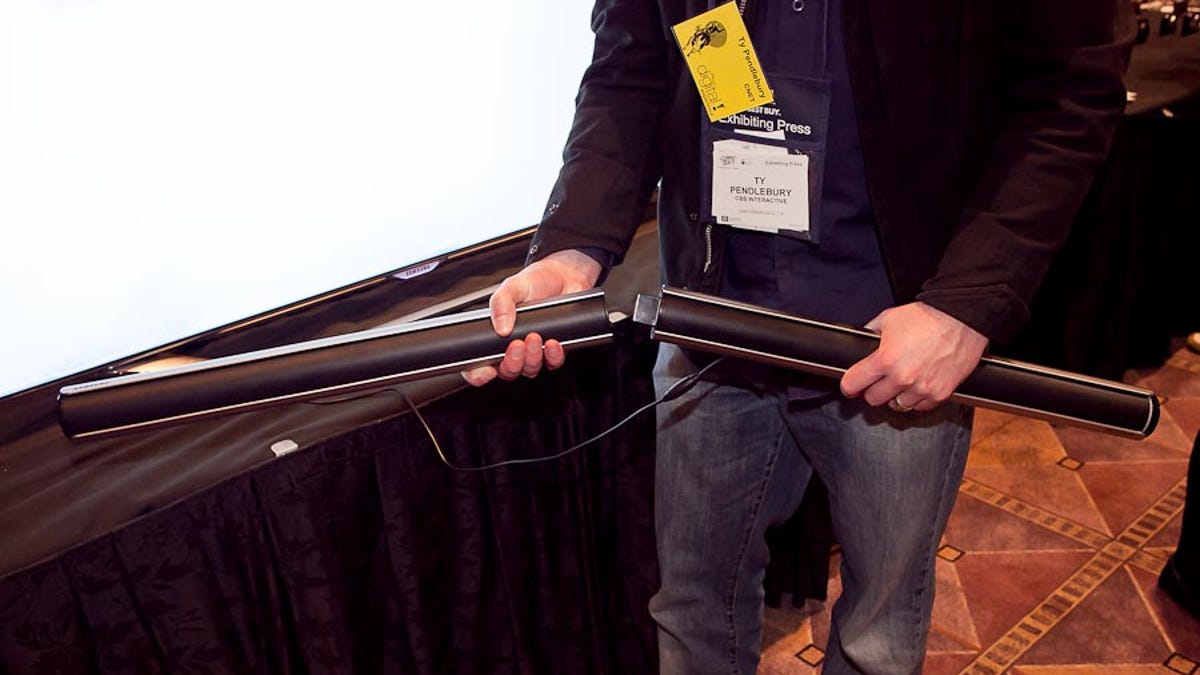New dumb trend at CES: Splittable sound bars
CES 2012 has brought us the new "splittable" sound bar design, even though nobody was asking for it.

LAS VEGAS--Sound bars have gotten cheaper, and they sound better and have more connectivity than ever before. Now, apparently you can snap them in half, even if you never wanted to.
Panasonic and Samsung both had "splittable" sound bars here at CES 2012 and I felt like I saw more of them on the show floor. The idea is you can split the bar into two speakers, place them on a stand, and create a more traditional 2.1 speaker system.
It's a nifty-looking feature, but it doesn't solve a problem anybody has ever had with a sound bar. I get plenty of reader mail about sound bars, but nobody has ever asked about a sound bar that can transform into separate speakers, probably because when they bought a sound bar, they wanted a sound bar.
It's not as if sound bars don't have real problems that need to be solved. They frequently block the TV's remote sensor, making it tough to control your your TV. (Yamaha's nifty YAS-101 has a built-in IR blaster on the back that passes through signals from the front.) Sound bars could still sound a lot better and I think most buyers would rather manufacturers put their effort in that direction.
The most frustrating thing is I'm betting the splittable design probably makes the sound bars flimsier and more liable to break. And they probably sound worse, or at least not as good as they could if they were optimized for one position or the other.
Nobody wanted splittable sound bars, but now we have them. Thanks CES 2012.

